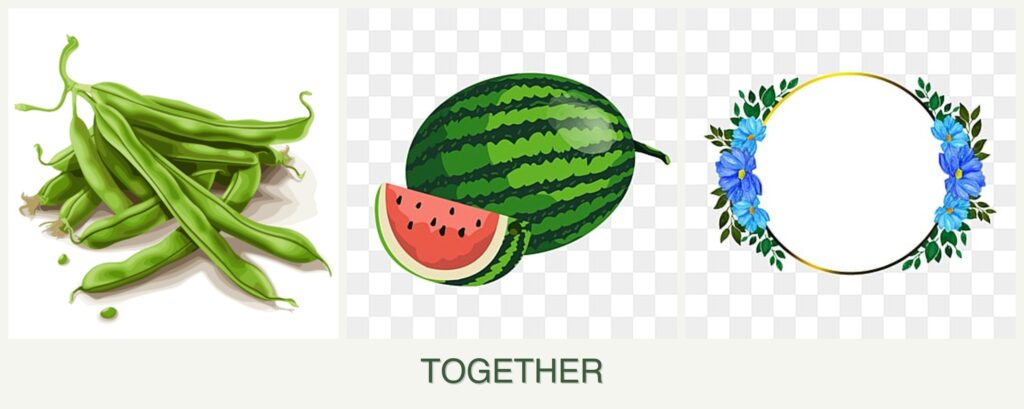
Can you plant beans, melons and zinnias together?
Can You Plant Beans, Melons, and Zinnias Together?
Companion planting is a popular gardening strategy that involves growing different plants together to enhance growth, deter pests, and maximize space. Gardeners often wonder if beans, melons, and zinnias can thrive in harmony. This article explores their compatibility and offers practical tips for successful planting.
Compatibility Analysis
Yes, you can plant beans, melons, and zinnias together, but there are important considerations to ensure their successful coexistence. These plants have compatible growth requirements and can offer mutual benefits. However, it’s crucial to understand their unique needs and how they can complement each other in the garden.
Beans are nitrogen-fixing plants, enriching the soil for nutrient-hungry melons. Zinnias, with their vibrant blooms, attract pollinators, which can boost melon yields. All three plants enjoy full sun and can thrive in similar soil conditions. However, careful attention to spacing and water needs is essential to prevent competition for resources.
Growing Requirements Comparison Table
| Plant | Sunlight Needs | Water Requirements | Soil pH and Type | Hardiness Zones | Spacing Requirements | Growth Habit |
|---|---|---|---|---|---|---|
| Beans | Full sun | Moderate | 6.0-7.0, well-drained | 3-10 | 4-6 inches apart | Climbing/bushy |
| Melons | Full sun | Moderate | 6.0-6.8, sandy loam | 4-11 | 2-3 feet apart | Vining/spreading |
| Zinnias | Full sun | Low to moderate | 5.5-7.5, well-drained | 3-10 | 9-12 inches apart | Upright/bushy |
Benefits of Planting Together
Planting beans, melons, and zinnias together offers several advantages:
- Pest Repellent Properties: Zinnias can deter aphids and attract beneficial insects, reducing pest pressure on beans and melons.
- Improved Growth: Beans enhance soil nitrogen, benefiting melons’ growth.
- Space Efficiency: Vertical growth of beans and the spreading habit of melons make efficient use of garden space.
- Soil Health: Beans improve soil structure and fertility, promoting healthier plants.
- Pollinator Attraction: Zinnias draw pollinators, increasing melon pollination and fruit set.
Potential Challenges
Despite their compatibility, planting these crops together can present challenges:
- Resource Competition: Ensure adequate spacing to prevent competition for sunlight, water, and nutrients.
- Different Watering Needs: Monitor soil moisture to meet the varying needs of each plant.
- Disease Susceptibility: Rotate crops annually to minimize disease risk.
- Harvesting Considerations: Plan access paths to avoid damaging plants during harvest.
Solutions: Use mulch to retain moisture, practice crop rotation, and provide trellises for beans to reduce competition and improve air circulation.
Planting Tips & Best Practices
- Optimal Spacing: Plant beans 4-6 inches apart, melons 2-3 feet apart, and zinnias 9-12 inches apart to allow for healthy growth.
- Timing: Plant after the last frost when soil temperatures reach 60°F (15°C).
- Container vs. Garden Bed: While garden beds offer more space, containers can be used for smaller setups with careful watering.
- Soil Preparation: Amend soil with compost to improve fertility and drainage.
- Companion Plants: Consider adding marigolds or nasturtiums, which also benefit these plants.
FAQ Section
Can you plant beans and melons in the same pot?
It’s not recommended due to their space and nutrient needs; use separate containers.
How far apart should beans, melons, and zinnias be planted?
Beans: 4-6 inches, Melons: 2-3 feet, Zinnias: 9-12 inches.
Do beans and melons need the same amount of water?
Melons may require more frequent watering, especially during fruiting.
What should not be planted with beans, melons, and zinnias?
Avoid planting with onions or garlic, which can inhibit bean growth.
Will beans affect the taste of melons?
No, beans will not affect melon’s taste but can improve soil health.
When is the best time to plant beans, melons, and zinnias together?
After the last frost, when soil temperatures consistently reach 60°F (15°C).
By understanding the dynamics of planting beans, melons, and zinnias together, gardeners can create a thriving, productive garden. With careful planning and attention to each plant’s needs, this trio can offer a bountiful harvest and a visually appealing garden space.



Leave a Reply